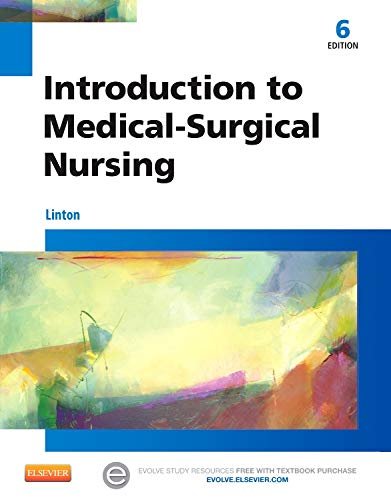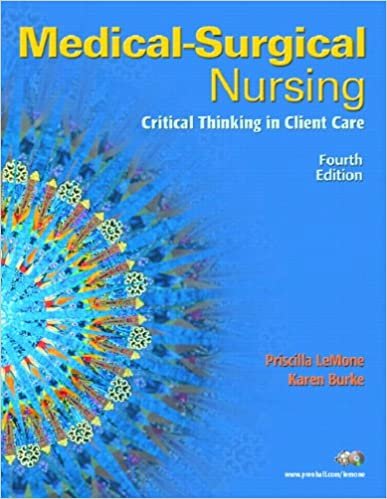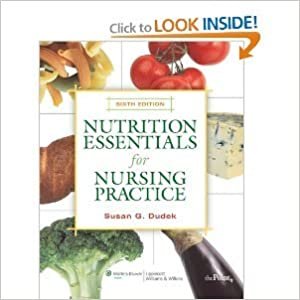Test Bank For Essentials for Nursing Practice 8th Edition Potter
Test Bank For Essentials for Nursing Practice 8th Edition Potter
Essentials for Nursing Practice 8th Edition Test Bank
Essentials for Nursing Practice 8th Edition
Chapter 01: The Nursing Profession
Potter: Essentials for Nursing Practice, 8th Edition
MULTIPLE CHOICE
1. A nurse uses effective strategies to communicate and handle conflict with nurses and other health care professionals. Which Quality and Safety Education for Nurses (QSEN) competency is the nurse demonstrating?
- Informatics
- Quality improvement
- Teamwork and collaboration
- Evidence-based practice
ANS: C
Teamwork and collaboration uses effective strategies to communicate and handle conflict. Informatics includes navigating electronic health records. Quality improvement uses tools such as flow charts and diagrams to improve care. Evidence-based practice integrates best current evidence with clinical expertise and patient/family preferences and values for delivery of optimal health care.
PTS: 1 DIF: Cognitive Level: Applying (Application)
REF: 11
OBJ: Describe the purpose of professional standards of nursing practice.
TOP: Nursing Process: Implementation MSC: NCLEX: Management of Care
2. A nurse is employed by a health care agency that provides an informal training session on
USNT O
how to properly use a new vital sign monitor. Which type of education did the nurse receive?
- In-service education
- Advanced education
- Continuing education
- Registered nurse education
ANS: A
In-service education programs are instruction or training provided by a health care agency or institution designed to increase the knowledge, skills, and competencies of nurses and other health care professionals employed by the institution. Some roles for RNs in nursing require advanced graduate degrees, such as a clinical nurse specialist or nurse practitioner. There are various educational routes for becoming a registered nurse (RN), such as associate, diploma, and baccalaureate. Continuing education involves formal, organized educational programs offered by universities, hospitals, state nurses’ associations, professional nursing organizations, and educational and health care institutions.
PTS: 1 DIF: Cognitive Level: Applying (Application)
REF: 6
OBJ: Discuss the importance of education in professional nursing practice.
TOP: Nursing Process: Evaluation MSC: NCLEX: Management of Care
3. A nurse listens to a patient’s lungs and determines that the patient needs to cough and deep breath. The nurse has the patient cough and deep breaths. Which concept did the nurse demonstrate?
a. Accountability
b. Autonomy c. Licensure
d. Certification
ANS: B
Autonomy is essential to professional nursing and involves the initiation of independent nursing interventions without medical orders. Accountability means that you are professionally and legally responsible for the type and quality of nursing care provided. To obtain licensure in the United States, RN candidates must pass the NCLEX-RN® examination administered by the individual State Boards of Nursing to obtain a nursing license. Beyond the NCLEX-RN®, some nurses choose to work toward certification in a specific area of nursing practice.
PTS: 1 DIF: Cognitive Level: Analyzing (Analysis)
REF: 6 OBJ: Discuss the characteristics of professionalism in nursing. TOP: Nursing Process: Evaluation MSC: NCLEX: Management of Care
4. A registered nurse is required to participate in a simulation to learn how to triage patients who are arriving to the hospital after exposure to an unknown gas. This is an example of a response to what type of influence on nursing?
- Workplace hazards
- Nursing shortage
- Professionalism NURSINGTB.COM
- Emergency preparedness
ANS: D
Many health care agencies, schools, and communities have educational programs to prepare for nuclear, chemical, or biological attack and other types of disasters. Nurses play an active role in emergency preparedness. Workplace hazards include violence, harassment, and ergonomics. A person who acts professionally is conscientious in actions, knowledgeable in the subject, and responsible to self and others. There is an ongoing global nursing shortage, which results from insufficient qualified registered nurses (RNs) to fill vacant positions and the loss of qualified RNs to other professions.
PTS: 1 DIF: Cognitive Level: Applying (Application)
REF: 4
OBJ: Discuss the influence of social, political, and economic changes on nursing practices. TOP: Nursing Process: Evaluation MSC: NCLEX: Safety and Infection Control
5. A nurse is an advanced practice registered nurse (APRN) who cares for geriatrics. This nurse is which type of advanced practice nurse?
- Clinical nurse specialist
- Nurse practitioner
- Certified nurse-midwife
- Certified registered nurse anesthetist
ANS: A
The clinical nurse specialist (CNS) is an APRN who is an expert clinician in a specialized area of practice, such as geriatrics or pediatrics. The nurse practitioner (NP) is an APRN who provides health care to a group of patients, usually in an outpatient, ambulatory care, or community-based setting. A certified nurse-midwife (CNM) is an APRN who is educated in midwifery and is certified by the American College of Nurse-Midwives. A certified registered nurse anesthetist (CRNA) is an APRN with advanced education in nurse anesthesia accredited program.
PTS: 1 DIF: Cognitive Level: Applying (Application)
REF: 8 OBJ: Describe the roles and career opportunities for nurses. TOP: Nursing Process: Evaluation MSC: NCLEX: Management of Care












Reviews
There are no reviews yet.